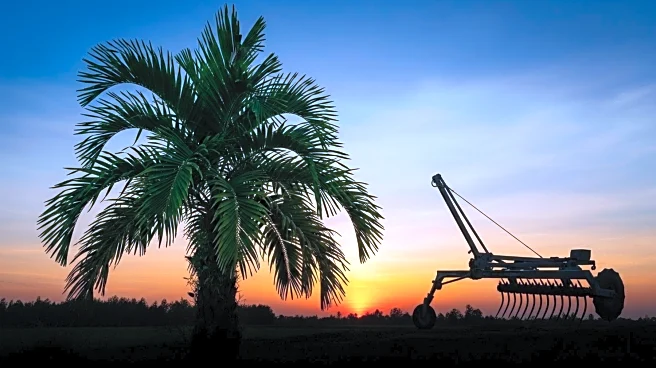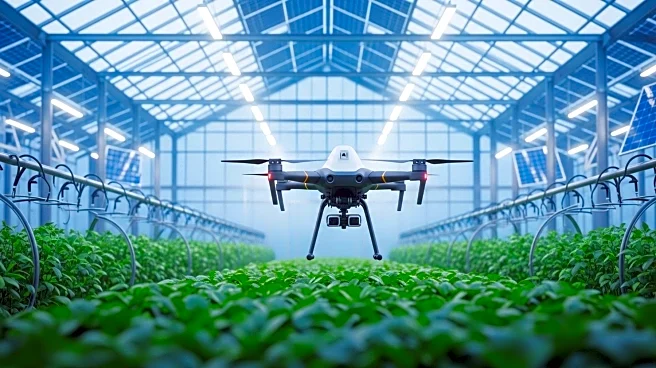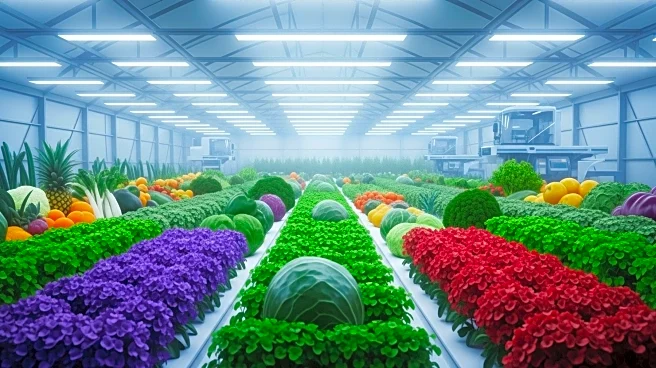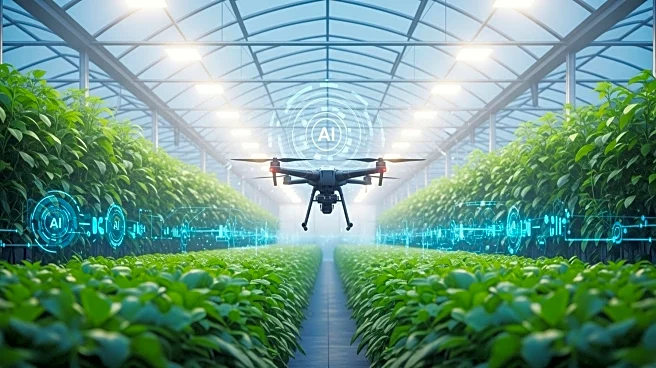What's Happening?
The Ministry of Food and Agriculture (MoFA) in Ghana has announced initiatives under the Ghana Tree Crops Diversification Project (GTCDP) to address the significant gap between palm oil production and consumption. Domestic consumption of palm oil has reached approximately 250,000 metric tonnes, far exceeding the current production levels of 50,000 metric tonnes. This disparity poses economic and industrial challenges, prompting MoFA to emphasize the need for increased investment, improved farming practices, and support for smallholder farmers. The GTCDP aims to boost production by promoting better seedlings, expanding cultivation, and enhancing market linkages. The government plans to develop a national palm oil industry policy to incentivize growth and improve the value chain, including providing 1.5 million oil palm seedlings to farmers.
Why It's Important?
The palm oil production shortfall in Ghana has significant implications for the country's economy and food security. The imbalance between production and consumption contributes to a substantial food import bill, exceeding US$3 billion. Addressing this shortfall is crucial for reducing dependency on imports and enhancing local production capabilities. The initiatives by MoFA could lead to increased economic activity in the agricultural sector, providing opportunities for smallholder farmers and boosting local industry. Successful implementation of these measures could also improve Ghana's trade balance and reduce the economic strain caused by high import costs.
What's Next?
The government has outlined immediate plans under the Medium-Term Expenditure Framework (MTEF) 2025-2028 to tackle challenges in the palm oil production value chain. The introduction of new regulations for palm oil imports aims to curb substandard products and support local processors. Stakeholders suggest that these regulations will help augment local production while reducing imports. The success of these initiatives will depend on effective implementation and collaboration between government agencies, farmers, and industry stakeholders.












